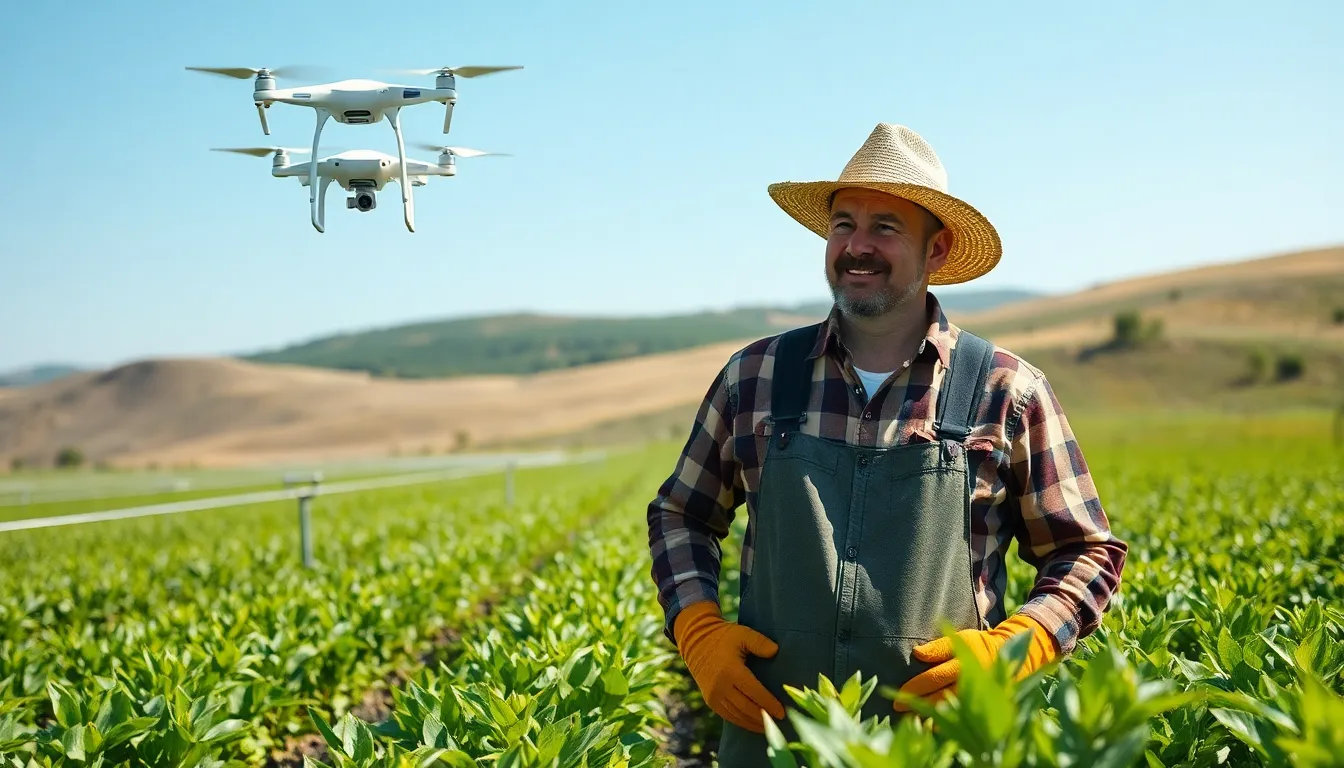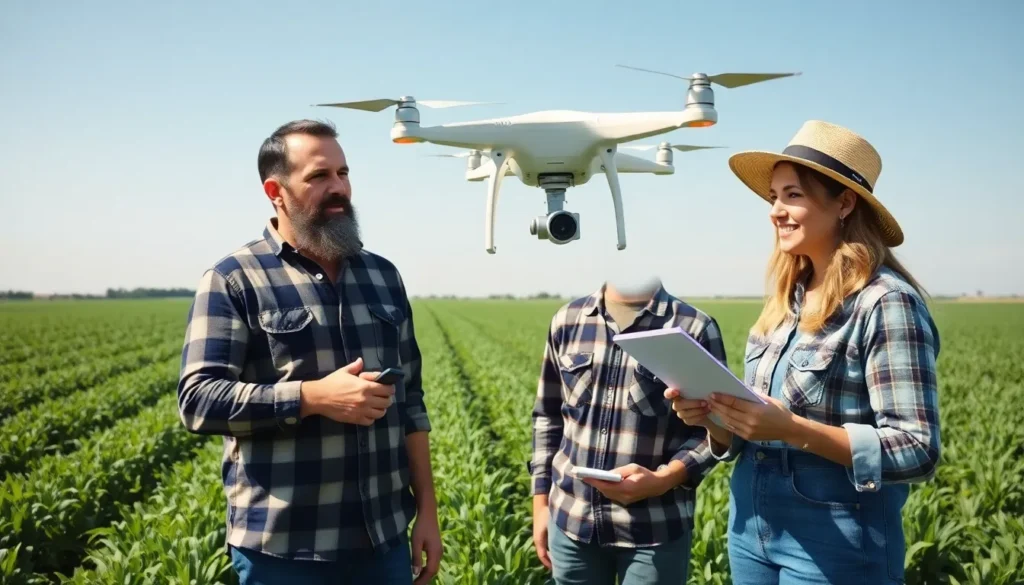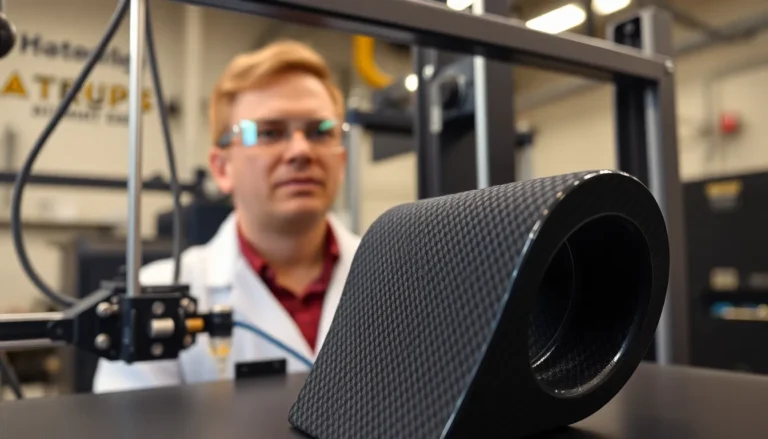Table of Contents
ToggleIn a world where the phrase “going green” is as trendy as avocado toast, sustainable farming technology is leading the charge for a healthier planet. Picture this: drones buzzing over fields like a farmer’s personal air force, precision irrigation systems that make water waste a thing of the past, and soil sensors that could give your smartphone a run for its money. It’s not just farming; it’s farming 2.0, and it’s here to save the day—one crop at a time.
As the global population skyrockets, the pressure on agriculture to produce more with less is intense. Enter sustainable farming technology, the superhero in this agricultural saga. It combines innovation with eco-friendliness, ensuring that farms not only thrive but also protect the environment. So grab your pitchfork and get ready to dive into a world where technology meets nature—because farming has never been this cool.
Overview of Sustainable Farming Technology
Sustainable farming technology encompasses a variety of innovations aimed at enhancing agricultural productivity while minimizing environmental impact. Drones, for instance, play a critical role in monitoring crop health and soil conditions. These devices provide farmers with real-time data, allowing for quicker decision-making.
Precision irrigation systems optimize water usage by delivering precise amounts to crops, significantly reducing waste. This technology adapts to current weather conditions and soil moisture levels, ensuring efficiency. Advanced soil sensors offer insights into nutrient levels and moisture content, helping farmers nurture healthier crops.
Biotechnology contributes to sustainable practices by developing resilient crop varieties that require fewer pesticides and fertilizers. This adaptation leads to reduced chemical runoff, improving soil and water quality. Renewable energy solutions, such as solar panels and wind turbines, further support sustainable farming by providing clean energy for operation.
Vertical farming technology enables year-round crop production in controlled environments, significantly decreasing land use. The integration of artificial intelligence in agriculture enhances yield predictions, disease forecasting, and supply chain efficiency. Through these technologies, farmers can achieve higher productivity levels with less environmental impact.
Blockchain technology strengthens supply chain transparency, allowing consumers to track the origins of their food. This transparency promotes sustainable practices and supports local farmers. The role of education and training in adopting these technologies is crucial, empowering farmers with the skills to implement sustainable strategies effectively.
Benefits of Sustainable Farming Technology

Sustainable farming technology offers numerous advantages that enhance agricultural practices and promote environmental stewardship. These benefits can be categorized into significant areas such as environmental impact and economic advantages.
Environmental Impact
Sustainable farming technology significantly reduces carbon emissions and minimizes resource depletion. Enhanced soil management improves soil health, promoting biodiversity and reducing the need for chemical inputs. Advanced irrigation systems conserve water, lowering consumption by up to 50%. Drones and sensors provide critical data, enabling precise monitoring of crop conditions and reducing pesticide use. Innovations in biotechnology develop plants that require less water and fewer pesticides, bolstering ecosystem resilience. Overall, these technologies promote sustainable land use and enhance food security while protecting natural resources.
Economic Advantages
Sustainable farming technology boosts profitability for farmers through increased efficiency. Implementing precision agriculture can raise crop yields by as much as 20%. By optimizing inputs, farmers save on costs related to water, fertilizers, and pesticides. Drones lower labor costs by streamlining monitoring processes. Accessing real-time data improves decision-making, enhancing crop management strategies. Sustainable practices can also lead to premium prices for organic produce, appealing to eco-conscious consumers. The combination of these economic benefits contributes to the long-term viability of farming operations while supporting local economies.
Key Innovations in Sustainable Farming Technology
Sustainable farming technology features several key innovations that enhance agricultural efficiency and environmental stewardship.
Precision Agriculture
Precision agriculture utilizes data-driven techniques to optimize farming practices. Sensors placed throughout fields gather information on soil moisture, nutrient levels, and crop health. This data allows farmers to apply water and fertilizers precisely when and where needed. Improved efficiency leads to reduced waste and lower input costs. Additionally, the use of GPS technology ensures accurate monitoring and management of crops, resulting in increased yields and healthier plants. Farmers who adopt precision agriculture often see significant enhancements in productivity and sustainability.
Vertical Farming
Vertical farming involves growing crops in stacked layers, often using controlled environments. This technology uses significantly less land compared to traditional farming methods. Efficient use of water and nutrients occurs through recirculated systems. Climate control allows year-round production, nearly eliminating the effects of weather variability. LED lighting optimizes growth conditions, enhancing photosynthesis and reducing energy consumption. Ultimately, vertical farming leads to fresher produce with a lower carbon footprint due to proximity to urban centers.
Aquaponics and Hydroponics
Aquaponics combines aquaculture and hydroponics, creating a symbiotic environment for plants and fish. Fish waste provides essential nutrients for plant growth, while plants filter and purify the water for fish. This closed-loop system conserves water significantly compared to traditional farming. Hydroponics, on the other hand, involves growing plants in a nutrient-rich water solution without soil. Both systems promote faster growth rates and yield higher production volumes. They offer innovative solutions for urban agriculture, reducing the need for large land areas while efficiently producing food.
Challenges in Implementing Sustainable Farming Technology
Implementing sustainable farming technology presents various challenges, impacting its widespread adoption across the agricultural sector.
Initial Costs
Initial costs of sustainable farming technology often deter farmers from adopting these innovations. Investing in advanced equipment like drones and precision irrigation systems requires significant financial resources upfront. Though these technologies lead to long-term savings, the immediate financial burden can be overwhelming for smaller farms. Financial incentives and subsidies can help offset investment costs, but they may not be readily available in all regions. Overcoming these barriers demands a concerted effort from governments and organizations to make funding more accessible for farmers looking to innovate.
Knowledge and Training Gaps
Knowledge and training gaps pose another significant hurdle in implementing sustainable farming technology. Many farmers lack access to the latest information on emerging technologies and best practices. Tailored training programs can address these gaps by equipping farmers with the necessary skills to utilize innovations effectively. Workshops, online courses, and partnerships with agricultural universities can help bridge this divide. As newer technologies evolve rapidly, continuous education becomes essential for farmers to adapt and thrive in a changing agricultural landscape.
Sustainable farming technology is reshaping the agricultural landscape by marrying innovation with environmental stewardship. These advancements not only enhance productivity but also protect vital resources for future generations. As the industry continues to evolve, embracing these technologies will be essential for farmers seeking to meet growing demands sustainably.
The journey toward sustainable agriculture requires collaboration and ongoing education. By investing in training and resources, farmers can overcome challenges and unlock the full potential of these innovative solutions. The future of farming lies in the balance between efficiency and sustainability, paving the way for a healthier planet and thriving agricultural communities.




